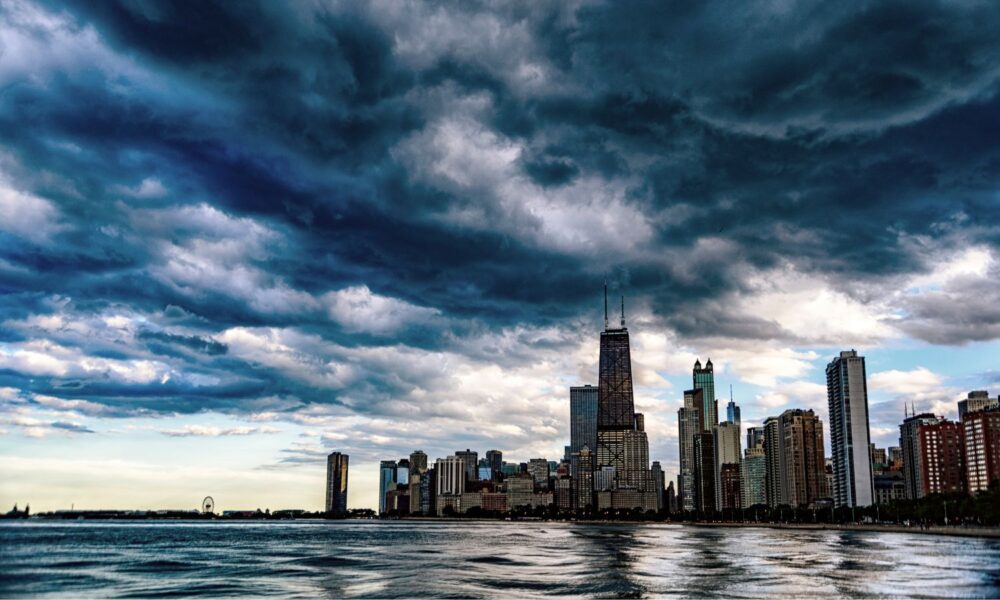When tornadoes and severe storms fueled by a changing climate swept through Chicago last summer, I was panicking—not for me, but for my parents. They live 45 minutes northwest of me, and the power had gone out. My dad, who needs to regulate his blood sugar closely and depends on medication, was locked out of the house. The keys were inside their car, which was inaccessible in the garage without power. And I had the only spare set.
We were lucky that my partner and I could drive over to help, and that my uncles and aunts live close by. But in that moment, the outage wasn’t just an inconvenience. It was a reminder of how many systems we assume will work until they don’t, and how fragile safety becomes when those systems fail.
We’ve grown used to the convenience of technologies that quietly run in the background: automated garage door openers, heating and cooling systems, and medical devices. But when the power goes out, that ease quickly turns into disruption. What seemed like a minor inconvenience transformed into something that disrupted our rhythm and our sense of safety.
For some folks, an outage just means a quiet night, a few candles, maybe playing cards by flashlight.
For others, it’s the start of a crisis.
At that moment, we turned to the community to stay safe. While that care carried us, it was clear the systems weren’t designed with us in mind.
As climate change drives more extreme storms, heat waves, and outages, the disconnect between how electricity systems are planned and how communities experience them is growing more urgent. That’s the focus of Keeping Everyone’s Lights On, a recent report from the Union of Concerned Scientists. In it, my coauthors Rachel Licker and Sam Gomberg examine how climate impacts are straining the grid, how those burdens fall unevenly, and why resilience planning must center equity, science, and lived experience.
When the power goes out
When the power goes out, the impacts depend not just on who you are, but on how long it lasts. What starts as a short-term inconvenience can quickly escalate into a crisis, especially for those already living with fewer resources or support.
In the first few hours of an outage, life-saving medications like insulin can start to spoil. Medical devices—ventilators, oxygen concentrators—start to shut down if there’s no backup power. Elevators stop working. Cell phones die. For people who rely on these tools to move, breathe, or just get home, even a short disruption can be life-threatening.
By day two or three, the fridge is warm. Groceries are spoiled. Families on a tight budget are left without food—and without the money to replace what they’ve lost. For folks living in apartment buildings, there might be no running water if the pumps fail. If you’re medically vulnerable, your care gets harder to access. And if you’re isolated, there’s often no one checking in.
By the end of the first week, what began as a manageable disruption for some can evolve into a cascading failure of safety, stability, and access. In places without cooling or heating, indoor temperatures become unsafe. Parents miss work. Schools might close. Public transit systems shut down. Rental units and public housing may be among the last places to get power restored. And for people already living paycheck to paycheck, even a few days without power can mean missed work, lost income, and mounting expenses. When an outage persists, a temporary hardship can lead to permanent displacement.
By week two or beyond, the damage deepens. Missed paychecks add up. Businesses shut down. People begin to leave—first their homes, then their communities. What might have started as a storm becomes the tipping point that pushes folks into debt, into poor health, or out of their homes entirely. In some places, long-term outages accelerate patterns of disinvestment— where recovery doesn’t come, and people have stopped expecting it to.
Resilient systems must start with resilient communities
The truth is this: power outages don’t impact everyone the same way. And they don’t come out of nowhere. They follow the same patterns we see in nearly every system—lines drawn by policy, wealth, race, access, and increasingly, by climate vulnerability.
Neighborhoods that were redlined decades ago are still more likely to have older, less reliable infrastructure. Communities with fewer trees and more concrete get hotter, faster, and stay that way when the A/C goes out. And communities that are excluded from the decision-making table? They’re usually the last to be heard—and the last to get help.
Planning models, tools used by government agencies and utilities to guide decisions about infrastructure and emergency response, don’t always reflect the realities people are living. For instance, people with disabilities or chronic illnesses face barriers that most planning models don’t even measure.
Electrical system planners often talk about the overall performance of their systems during an outage. But statistics and averages don’t mean much if your neighborhood was one of the last to get the lights back on. Communities are already practicing resilience—because they’ve had to. What’s often missing is a system designed to recognize that reality and respond to it. Which is why resilience planning, how utilities and agencies prepare for, respond to, and recover from disruptions, needs to start with those most impacted. If a resilience plan works for those hit the hardest, it’ll work better for everyone.
As climate events grow more intense and more frequent, resilience planning for electrical systems that serve us all must start with people, especially those facing the most significant fallout. Because resilient communities already exist. They’ve long been adapting, organizing, and caring for one another in the absence of reliable systems. The challenge is building systems that recognize that work and invest in it.
That means talking to communities. It means measuring what matters—access, vulnerability, well-being—not just the number of customers served. It means honoring lived experience and community knowledge as expertise. It means making decisions that reduce harm and repair inequity, not just optimize for efficiency.
What resilience can look like
Too often, resilience planning happens far away from the people it’s meant to serve. Decisions are made using terms like “electric load served” or “economic value,” technical language that rarely captures what people actually experience. But too few are asking who’s actually being left in the dark or what it may cost them, especially as climate extremes become more frequent and severe.
And that’s a problem.
Because people know what resilience actually looks like. They’ve been living it—in communities on the frontlines of climate change, where every storm, heatwave, or outage tests the limits of what care alone can carry.
It’s the auntie knocking on doors when the A/C stops working, the neighbor with the cooler filled with ice, the community center that opens its doors as a charging or cooling station, the kid translating emergency texts for their family, and the elders who remember what went wrong last time and are still waiting for help. It’s the way my family built community in the United States just as they would in India: as a village, living nearby, clustered close. So when the lights go out, no one is alone.
These acts of care are the foundations of resilience, but they were never meant to carry the weight of broken systems. Communities can be resilient, but they shouldn’t have to be resilient alone. Our systems need to meet that care with investment, infrastructure, and planning that’s rooted in the same spirit.
But too often, community engagement is treated like an afterthought. Maybe it’s a survey, a meeting notice in a language no one reads, or a public comment session scheduled at a time when few working people can attend.
Resilience planning needs to be grounded in community-built wisdom because communities have long been resilient. They need systems designed to listen, respond, and uphold that care.
If we want a grid that protects people, it needs to be shaped by people. That means planners and decision makers showing up in communities early and often, making information clear and accessible, compensating folks for their time and knowledge, and giving them real decision-making power, not just asking for input once everything’s already decided.
Because without that? We get resilience plans that sound great in theory but fall apart in practice.
Building systems that work for everyone
So much of our daily lives runs on invisible systems powered by electricity. We’ve come to depend on them not just for convenience but also for access, communication, and even survival. When those systems fail, it’s a matter of who can adapt quickly and who gets left behind.
In the days after those storms last summer, I kept wondering: what if we hadn’t been close by? What if help hadn’t come?
Although my immigrant parents have acclimated to the systems and rhythms of US life, situations like these—emergencies that require knowing how to navigate local services or safety protocols—can still feel overwhelming. My sister and I often step in, piecing together resources, translating terms, and making quick decisions.
That storm last summer helped me understand how many people live in that kind of uncertainty every time there’s a storm—and how little that reality shapes the way our power system planners think about resilience to outages.
If electrical system planners are serious about building an energy system that actually works in a crisis, they need to understand that resilience isn’t just engineered, it’s lived, practiced, and sustained by communities. It’s time our systems were designed to reflect and reinforce that. They need to plan like people’s lives depend on it—because they do.

